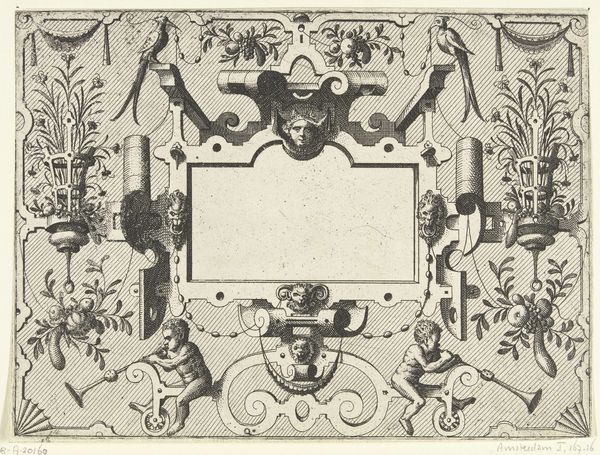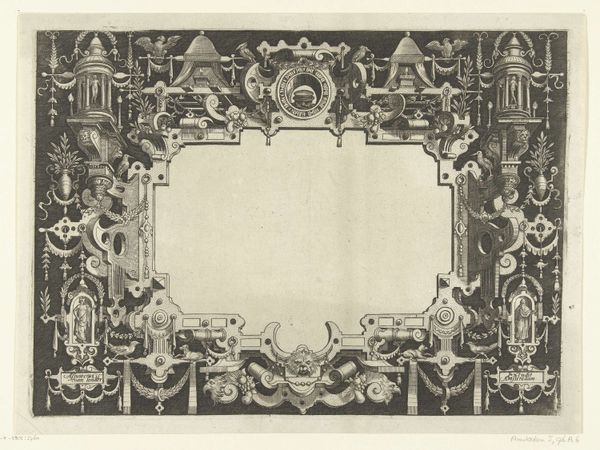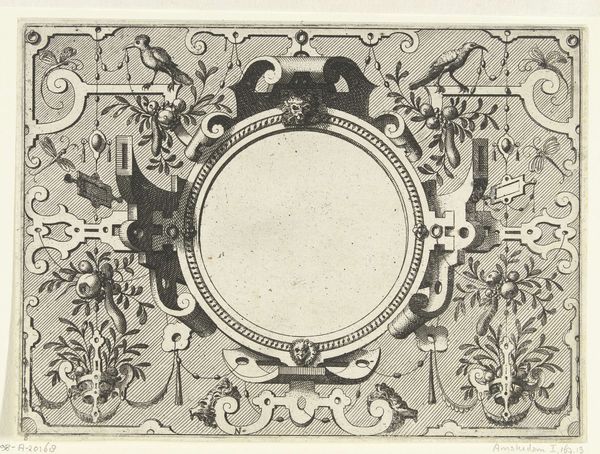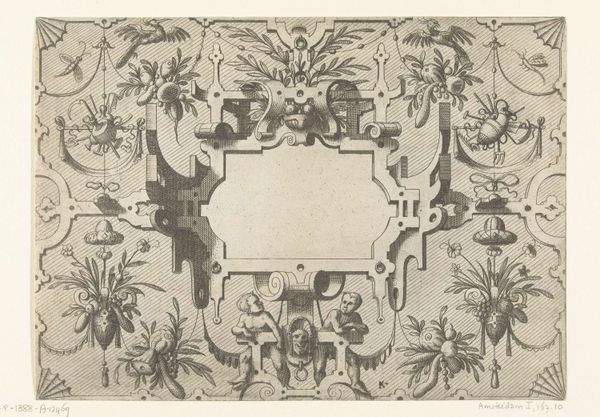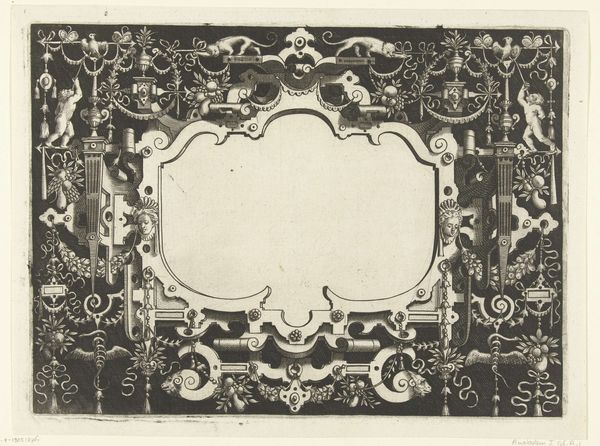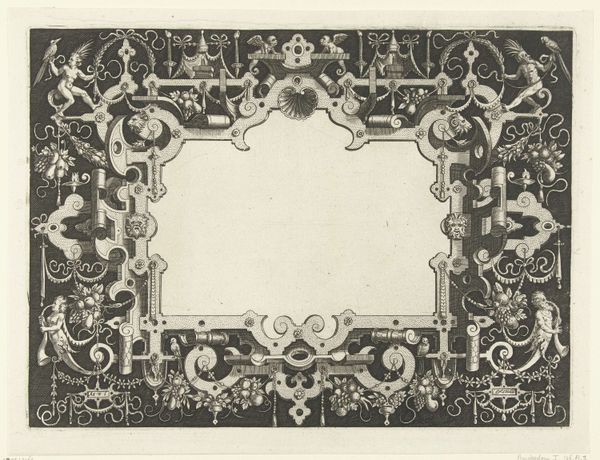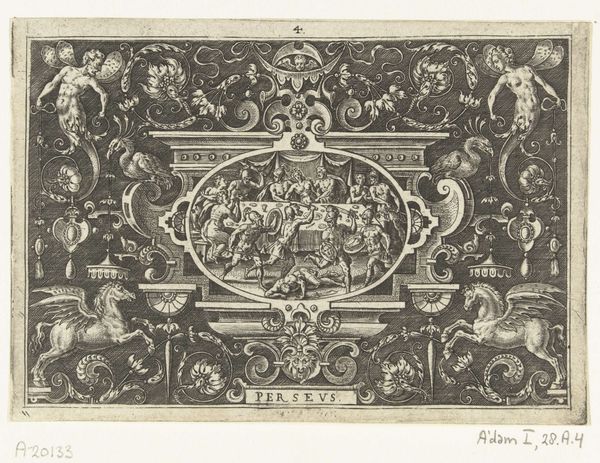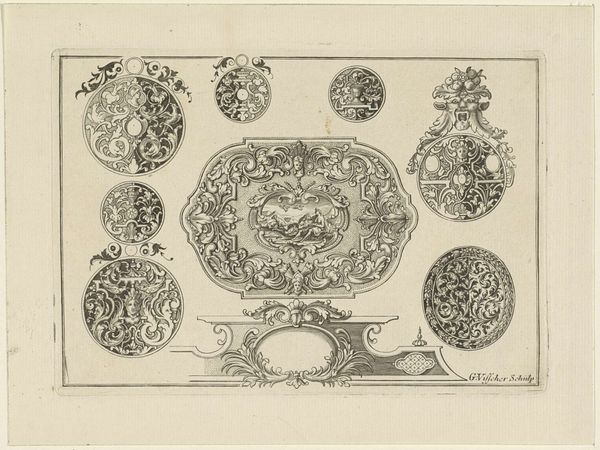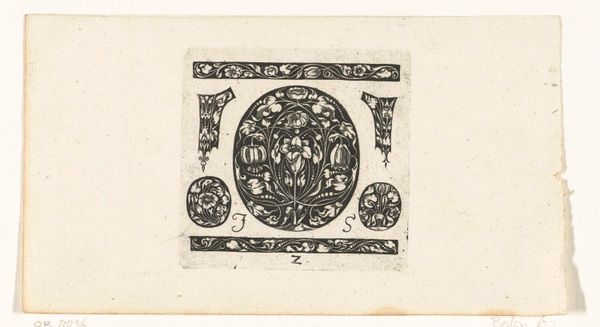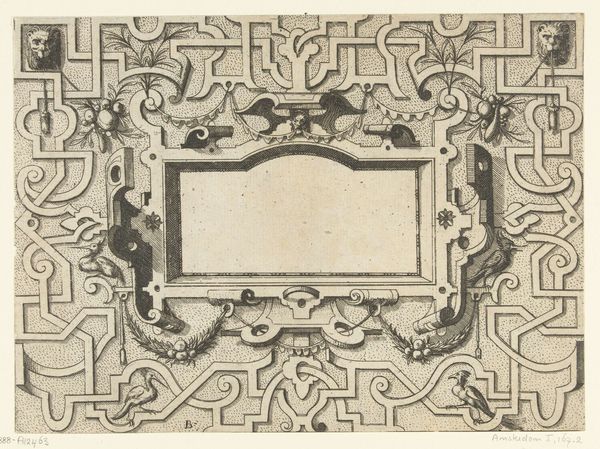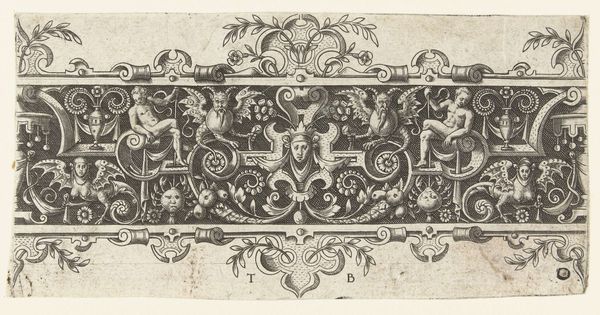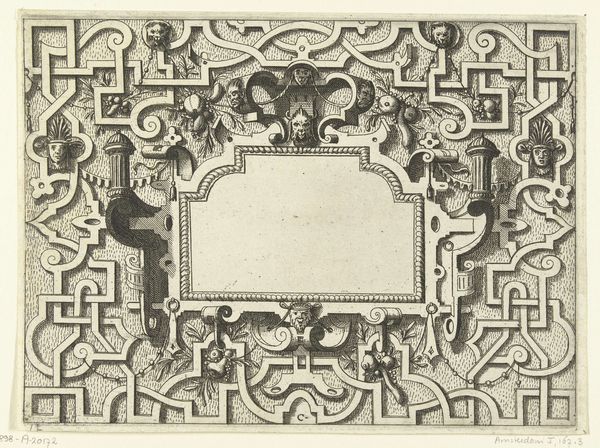
Cartouche in een omlijsting van rol- en beslagwerk c. 1555 - 1560
0:00
0:00
johannesoflucasvandoetechum
Rijksmuseum
drawing, print, ink, engraving
#
drawing
#
pen drawing
# print
#
form
#
11_renaissance
#
ink
#
geometric
#
engraving
Dimensions: height 151 mm, width 206 mm
Copyright: Rijks Museum: Open Domain
Editor: This intricate engraving, "Cartouche in een omlijsting van rol- en beslagwerk" by Johannes or Lucas van Doetechum, dates back to around 1555-1560. It's incredible the level of detail they achieved! I’m struck by how this empty central space is both a focal point and kind of… unsettling. How do you interpret this work, especially within its historical context? Curator: What grabs my attention is precisely that tension you've identified. Consider the socio-political climate of the 16th century: religious upheaval, burgeoning nation-states, and the rise of mercantile power. This cartouche, ostensibly a decorative frame, exists within a broader visual language that reinforces social hierarchies and ideologies. Ask yourself, what narratives were being suppressed to maintain existing power structures? What happens if we consider this "empty space" as a deliberate void, a site for challenging those dominant discourses? Editor: That’s fascinating. So, it's less about what should be *in* the frame, but *why* it's empty in the first place? I hadn't thought of it as a potentially subversive act. Curator: Exactly. By not filling the frame with a predetermined image or text, does it implicitly invite us to question whose stories are told, and whose are omitted? And look at the elaborate, almost aggressive ornamentation *around* the void; the grotesque faces, the militaristic elements. Does that perhaps reveal a desire to impose order or control what might be shared? How does that ornamental language function to contain the empty space? Editor: I see what you mean! Now the elaborate details almost feel like they’re actively guarding against something, reinforcing an imposed silence. Curator: Precisely. Perhaps this work can challenge us to question established narratives. Editor: That's given me a totally new perspective! I came in thinking it was simply a decorative piece, but now it feels loaded with unspoken meaning. Curator: That’s the beauty of art, isn’t it? Shifting perspectives can radically alter our understanding of the past and present.
Comments
No comments
Be the first to comment and join the conversation on the ultimate creative platform.
